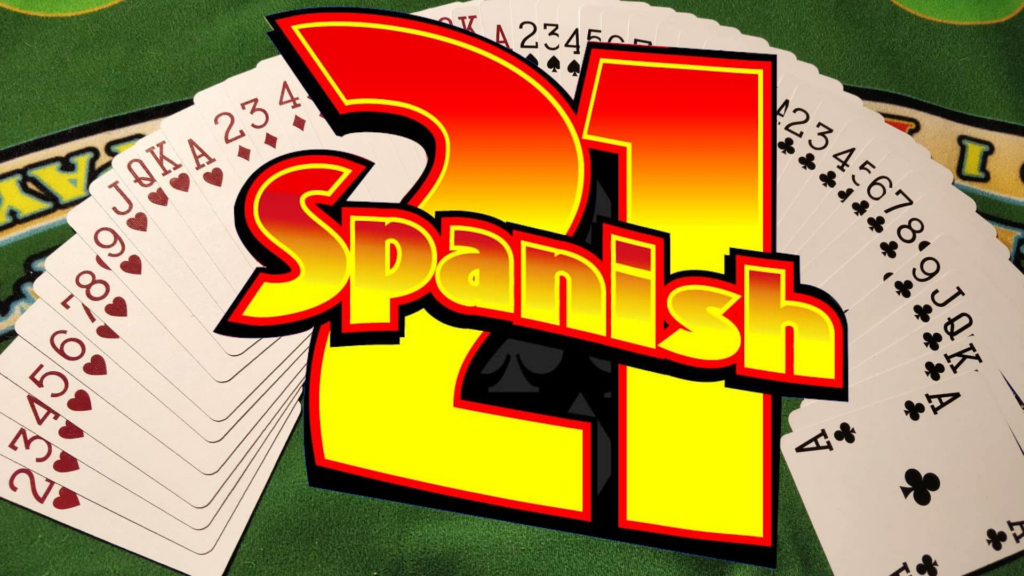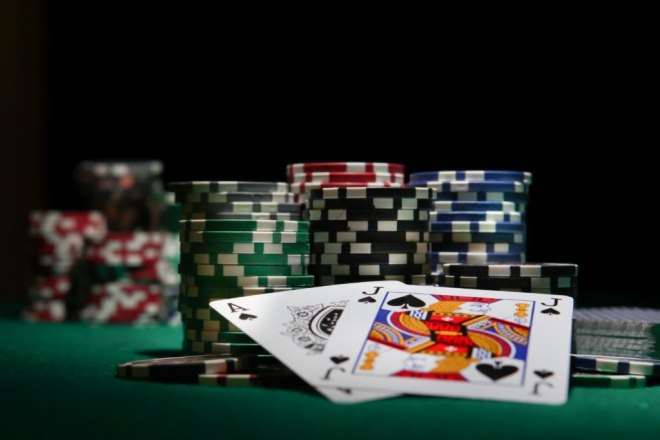Although Spanish 21 may sound like a novel and exotic game, it’s really just blackjack, which most people are familiar with. The distinction is seen in the many winning possibilities that are available depending on the card combinations that you obtain. There are modifications that make the game more exciting for those who want to switch things up, but the essential rules remain the same, making it accessible to beginners.

SPANISH 21

Similar to standard Blackjack, but with extra possibilities and prizes, is Spanish 21. One distinction is that each deck now contains 48 cards instead of the original 48 after all “10” cards are eliminated. Kings, Queens, and Jacks add up to ten. Aces have a value of either 1 or 11, depending on which way the player wins. Face value is applied to all other cards.
The rules of Spanish 21 are identical to those of standard Blackjack, with the following exceptions:
Spanish 21 Table Layout Explained

Basic Rules of Spanish 21
- Spanish 21 and blackjack share the same fundamental rules. Getting a hand that totals 21 or as near to it as possible without going over is the aim of the game.
- The dealer and each player are dealt two cards to begin the game. Dealing cards usually occur with one card dealt face down and the other face up. Sometimes the dealer receives one card face down while the players receive both cards face up.
- Once you’ve received your first cards, you can choose to either “stand,” which means you hold onto your hand, or “hit,” which means you draw another card. You may keep hitting until you either go over or reach 21.
- The removal of all 10s from the deck in Spanish 21 is a significant distinction between that game and blackjack.
- When the first two cards dealt together equal 21, you have a blackjack. This is when you have an Ace (which can be worth 1 or 11, depending on your hand) plus a face card (Jack, Queen, or King). The dealer automatically wins if they get a blackjack. If not, bets are won by any player who hits 21 or comes closer to it than the dealer.

Spanish 21 Strategy Chart

Also Read : The Art of Baccarat: Rules, Variations, and Winning Strategies
How to Play Spanish 21
The fundamentals of Spanish 21 are the same as those of Blackjack. To increase your chances of winning and to enjoy the game more, you should get familiar with a few more complex rules.
Objective
Similar to blackjack, the goal of Spanish 21 is to reach 21 or as close to it as you can without going over.
The two main ways to play Spanish 21 differently are to use different betting strategies that can pay out for different combinations and to keep in mind that there are no 10s in the deck. These pairings are:
| 5-Card 21 | Pays 3 to 2 |
| 6-Card 21 | Pays 2 to 1 |
| 7+ Card 12 | Pays 3 to 1 |
| 6-7-8 Mixed Suits | Pays 3 to 2 |
| 6-7-8 Suited | 3 to 1 |
| 7-7-7 Mixed Suits | Pays 3 to 2 |
| 7-7-7 Suited | Pays 2 to 1 |
| 7-7-7 Spaded | Pays 3 to 1 |
Hit
If the dealer gets a Blackjack, they automatically win. You may be positive the dealer does not have a blackjack, though, if their face-up card is not a Jack, Queen, King, or Ace. As a result, you want to aim to get your hand as close to 21 as you can. You should hit if the value of your hand is low.
Stand
You should stand up or cease taking cards if you believe your hand is as near to 21 as it will get. Given the likelihood of drawing a face card with your subsequent card, you could stand with a hand as low as 14. To choose when to stand, all you need to do is consider your personal risk tolerance.
Give Up
You can give up if you don’t think you have a good chance of winning. This implies that you forfeit the hand and pay up half of your wager. Because you will only lose half of the bet and not the entire amount, this can be a decent approach if you are fairly certain that you will lose.
Double Down
You can double down if you believe you just need one more card to win. When a player has an 11-value hand, they usually double down because there’s a strong chance the next card could be a face card, bringing their total to 21. By doubling down, you receive one additional card in addition to doubling your bet.
Split
You can decide to divide your first two cards into two hands if they are a pair. After placing your initial wager on the second hand, you are free to play the other one independently, hitting when necessary, and placing bets as you see fit.
Take Insurance
If the dealer’s face-up card is an Ace, you can choose to take insurance for half of your original bet. If the dealer does end up getting 21, you will be paid out 2-1.
Basic Strategy
The secret to your success in Spanish 21 is understanding every rule. Learn how to play 21 in all of its variations, be sure you comprehend all of the betting possibilities (such as splitting, doubling down, and surrendering), and be aware of the Spanish 21 payouts. You may decide how to gamble and when to hit and stand by using this knowledge. The remainder of the game is totally arbitrary.
- Some things to keep in mind:
- A player’s natural Blackjack beats the dealer’s Blackjack every time.
- Late surrender is allowed in Spanish 21.
- It’s possible to surrender after doubling down.
- Players can split aces multiple times.
- Players can double down after splitting.
Tips to Win at Spanish 21
Tips and strategies for Spanish 21 can get quite extensive, covering a variety of possible hands. Here are some highlights to keep in mind:
- Always hit on hands valued at a hard 4 through 8 or 12
- Always hit on hands valued at a soft 13 or 14 (“soft” hands are made with an Ace)
- Always double down on a hand valued at 11
- Always stand on hands valued at a hard 18 or higher
- Never split a pair of 4s or 5s
- Always stand with a pair of 10s
- Always split a pair of Aces
Again, this list can get quite extensive. Start small by memorizing a few of these tips. Once you get more familiar with the game and these strategies feel like second-nature, study some additional tips to add to your repertoire.
Spanish 21 Etiquette
The rules of behavior in Spanish 21 are the same as those in Blackjack. A table is never used for anything other than playing. Make sure you are aware of the minimal bets available at the table and that you can adjust your play accordingly.
Learn the play-related hand movements. To indicate whether you wish to hit or receive another card, tap the table in front of you with your finger. If you would want to stand, wave your hand over your cards. To increase your wager, take the necessary number of chips, put them next to your initial wager, and then indicate with one finger. To divide, proceed as before with your chips, but raise your two fingers into a V.
Super Bonus
In addition, the Player is awarded a predetermined bonus based on the wager amount if they get three 7s of the same suit and the Dealer’s up card is also a 7. $5,000 for a $5–$24.50 wager and $5,000 for a $25 or more wager. All players who placed a wager during that round of play receive a $50 Envy Bonus. Super Bonus for Splitting/Doubling VOIDs.
Match the Dealer Spanish 21
Players may place a side wager that will win if either one or two of their initial cards match the dealers up card. The Minimum bet on Match the Dealer is $1 and the Maximum is $100.
| 1 Non-Suited Match | Pays 3 to 1 |
| 2 Non-Suited Matches | Pays 6 to 1 |
| 1 Suited Match | Pays 12 to 1 |
| 1 Non-Suited Match and 1 Suited Match | Pays 15 to 1 |
| 2 Suited Matches | Pays 24 to 1 |

Leave a Reply